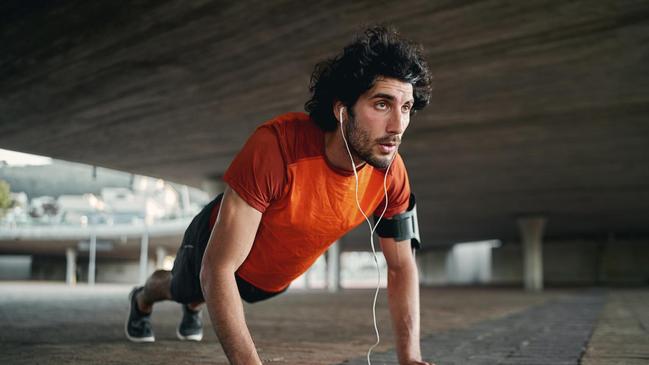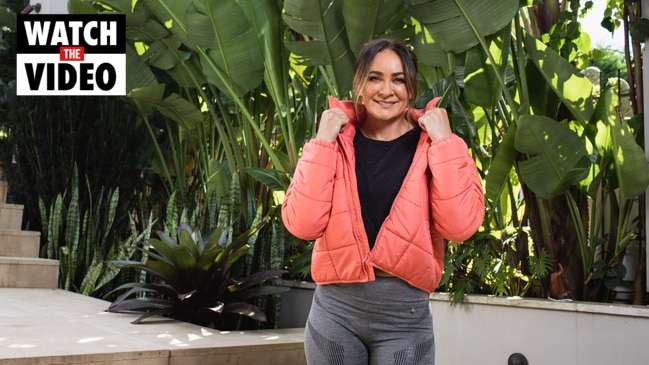Midlife health test: the nine ways to check your brain and fitness
These simple tests will reveal the true condition of your mind and body. How many can you do?

In midlife we’re beset by niggles mental and physical. Is it a sign of something sinister that you forgot your colleague’s name? Is it bad that you can’t get out of a chair without saying “oof"? How worried should you be?
If you’re concerned that your body and brain aren’t as fit as you’d like them to be, these simple DIY tests will give you an idea of how healthy you really are - and what you can do to help yourself.
1. How many press-ups can you do?
What it shows: The number of press-ups you can do at one time is a good indicator of your risk of cardio-metabolic health problems, cardiovascular disease and falling as you get older. Count how many full press-ups you can manage consecutively (with no long pauses) before you have to stop. According to figures set by the American College of Sports Medicine, 19-30 for women and 21-36 for men aged 20 to 40 are good scores, and 10-21 is good for men and women in their fifties and sixties.
A 2019 study published in the Journal of the American Medical Association found that men in their thirties and forties who were able to complete fewer than ten press-ups were at a significantly higher risk of cardiovascular disease in the next decade than those who could do more. Men who managed more than 40 press-ups were at 96 per cent less risk of heart problems in the next ten years than those who did fewer than ten.

How to improve: Press-ups build muscle strength and endurance, and are considered one of the best all-round exercises because they work the core, back, shoulders, arms, glutes and legs. The more of them you can do the better. “If you are unable to do a single full press-up, start with modified ones with your knees on the ground, and when you can do 15-20 of them try the full press-up,” says Dalton Wong, the founder of Twenty Two Training.
2. Stand on one leg for ten seconds
What it shows: If you can’t stand on one leg for more than ten seconds on each leg, it’s a sign that you are at increased risk of falls, fractures and health issues including stroke.
Try standing barefoot with your eyes open and raising one foot off the floor by bending at the knee. Time how long you can maintain that position.
Balance diminishes quickly from the mid-fifties, and the less stable we become the greater the risk of falls and other adverse health outcomes.
Japanese researchers used MRI scans to measure the brains of people in their sixties who were asked to stand on one leg. Struggling to balance for 20 seconds or longer was associated with an increased risk of small blood vessel damage in the brain, stroke and reduced cognitive function. The researchers said that it “is an important test for brain health”.

A study in the British Journal of Sports Medicine found that the ability of those in middle age to stand on one leg for ten seconds was associated with higher rates of survival years later, and others have shown that people in their fifties who can’t manage more than two seconds are three times as likely to die before the age of 66 as those who can.
How to improve: It’s important to work at balance to maintain it, and studies at Manchester Metropolitan University have shown that even elite athletes have poor balance skills unless they incorporate exercises such as this into their routines. Build up to 60 seconds on each leg if you can - balancing on each leg for that long three times daily can improve the hip-bone density of older people. Once you can manage 20 seconds on each leg, try it with your eyes closed.
3. How many times can you sit and stand from a chair in 30 seconds?
What it shows: The number of times you can sit and stand from a chair in half a minute is a good test of your lower-body strength, balance and mobility, which are important when it comes to preventing falls. Sit upright in the middle of a hard-backed dining chair, your arms folded across your chest and feet flat on the floor, shoulder-width apart. Raise yourself to a standing position, knees straight, before sitting down again. Don’t cheat - half standing or sitting doesn’t count.
Complete as many full stands followed by full sits as you can in 30 seconds. The average scores for ages 30 to 60 are 24-25 for women and 25-27 for men; for 60 to 70, 21 (women) and 24 (men); for 70 to 79, 17 (women) and 19 (men); and 80 and over, 14 (women) and 17 (men).
Older people who struggle to stand up from a chair repeatedly have lower levels of body strength, resulting in inactivity, balance problems, falls, accidental death and injury. And the test has been shown to be helpful in predicting risk of musculoskeletal problems, such as back pain, in office workers.
How to improve: The more full and controlled repetitions you can manage in 30 seconds the better. “This is a precursor to a full squat, and very good for improving full range of functional movement,” Wong says. “Once you can manage it, try 45-60 seconds daily of regular deeper squats, focusing on good technique.”
4. Get up from sitting on the floor without using your hands
What it shows: Getting up from the floor using mainly your core muscles is a measure of musculoskeletal fitness that can predict mortality risk in middle-aged and older people. “It’s also a useful indicator of flexibility, leg and core strength and balance in all ages,” Wong says. Sit down on the floor with your legs crossed and get up without using your hands or knees as leverage or for balance. If you can stand up without using a hand, forearm, knee, side of a leg or hand on a knee, you score a perfect ten (that’s five points for sitting down, five points for standing up). If you use your hands, knees etc for support, subtract one point each time. Subtract a half-point if you were wobbly at any point. Do the test twice to obtain an average of your best scores. Aim for eight to ten points.
In a landmark study published in the European Journal of Preventive Cardiology involving 2,002 people aged 51 to 80, those who had the lowest score of 0-3 points were found to be at five to six times higher risk of dying prematurely than those who scored 8-10 points. “If a middle-aged or older man or woman can sit and rise from the floor using one hand - or even better, without the help of a hand - they are not only in the higher quartile of musculoskeletal fitness, but their survival prognosis is probably better than that of those unable to do so,” the researchers wrote.
How to improve: Gradually raise your score until you can stand unaided. “Chair squats and regular squats will help to improve the strength needed to do this,” Wong says.
5. Walk as far as you can in six minutes
What it shows: This is a key measure of endurance and aerobic capacity, cardiovascular and lung health. The six-minute walk test (or 6MWT) is an established measure of aerobic capacity developed by the American Thoracic Society. If you don’t get further than 350m on a flat route it may be an indication of poor cardiovascular function and could be a sign of health conditions including respiratory or lung conditions, muscle loss or underlying illness.
Go for a power walk (not running but not dawdling either) for six minutes, measuring the distance covered on a hard, flat surface (it is best to do this on an athletics track, or use a fitness tracker). Aim for 400-700m.

How to improve: The more you walk the more efficient at it you will become, and it is recommended that the test is repeated every six months to check progress. “Aim to walk for 30-90 minutes a few times a week as you get fitter,” Wong says. “Varying pace and terrain to add some inclines, or even walking upstairs every day, will build strength and help to make you a more efficient walker.”
6. How many animals or fruits can you name in 60 seconds?
What it shows: This test can warn you of early signs of memory loss and cognitive decline. Ask someone to set you a task of listing (aloud or on paper) as many animals, fruits, countries or something else as you can in a minute. Aim for 20-25 correct words. If you repeatedly score 10-15 on tests of different lists, it could be a sign of memory problems.
Our brains store the words we learn in our memories. If you struggle to remember words or confuse them with others it could be associated with memory problems. According to the Alzheimer’s Society, this is one of the battery of tests used by GPs to flag early signs of dementia.
How to improve: Do crosswords and play word games such as Scrabble and Wordle to keep your memory and vocabulary recall primed.
7. Can you link fingers behind your back?
What it shows: Are you worried that you’re not as flexible as you used to be? This simple test gives a clear indication of your upper-body and spinal mobility, and postural decline. Place your right hand over your right shoulder with your fingers extended and your left hand behind your back, fingers extended. Top marks if you can link your fingertips, but otherwise ask someone to use a ruler or tape measure to measure the number of centimetres by which your middle fingers are short of touching. Switch sides and repeat. Your aim is to get your fingertips as close to touching as possible on both sides.
Researchers reporting in the journal Age showed that the shoulders and trunk tend to lose flexibility more quickly than the elbows and knees, and men lose mobility in this area more quickly than women do. A study in Clinical Interventions in Ageing showed that after the age of 60 women performed 20-40 per cent better in this test than men.
How to improve: At any age you may be more flexible on one side of your body than the other, so work on evening out your shoulder flexibility. The movement therapist Roger Frampton recommends daily coffee-table hangs. Kneel at arms’ length in front of a coffee table and grab the nearest edge with your hands. Keeping hold, relax your upper body towards the floor, increasing the stretch in your arms and back by moving your knees further from the table.
8. Can you draw an accurate clock face?
What it shows: This simple test is a key to your mental status, visual and spatial abilities and possible cognitive decline. Draw a clock face from memory on a plain sheet of white paper. Ask someone to select a random time, then draw the hands at the appropriate time on the clock. Ask the person to check how well the circle is drawn, if the numbers 1-12 are included correctly, that two hands were drawn on the clock and that the hands say the time you were asked to draw. Award one point for each of these and tot them up. A normal score is 4-5. Fewer than four points is concerning.

This test is considered a reliable early measure of cognitive decline, and Dementia UK says it is a good idea to encourage a relative or friend to do the test at home if you are concerned about their memory loss - and especially if they are reluctant to go to their GP. If their score is low it’s wise to seek advice from a GP.
How to improve: Repeat the test every few months. Do number puzzles such as sudoku and use brain-training apps and games to challenge your memory.
9. Do 25 calf raises in 30 seconds
What it shows: Doing calf raises in a set time tests the muscle and tendon strength of your foot, lower leg and ankle, important for walking, reaching and lifting. They are a great indicator of power and fitness.
Stand barefoot facing a wall 10-12in away. Place your fingertips lightly on the wall at shoulder height, elbows slightly bent and feet hip-width apart. Raise your heels as high as possible with knees straight, then lower yourself to the ground. Repeat the full movement counting how many repetitions you do in 30 seconds. Under-60s should aim for 25 calf raises, over-60s 21-22 in 30 seconds.
Older adults with the best calf-raise scores were found to have higher levels of functional fitness, strength, power, speed and range of movement in a study in the journal Physical Therapy in Sport.
How to improve: Build up your calf raises, aiming for 3 x 15 seconds two to three times a week. “As you get stronger you can do them standing on the edge of a step, slowly lowering until your heel cannot lower any further,” the physiotherapist Paul Hobrough says. “Return to the top again in one smooth movement.”
The Times





To join the conversation, please log in. Don't have an account? Register
Join the conversation, you are commenting as Logout